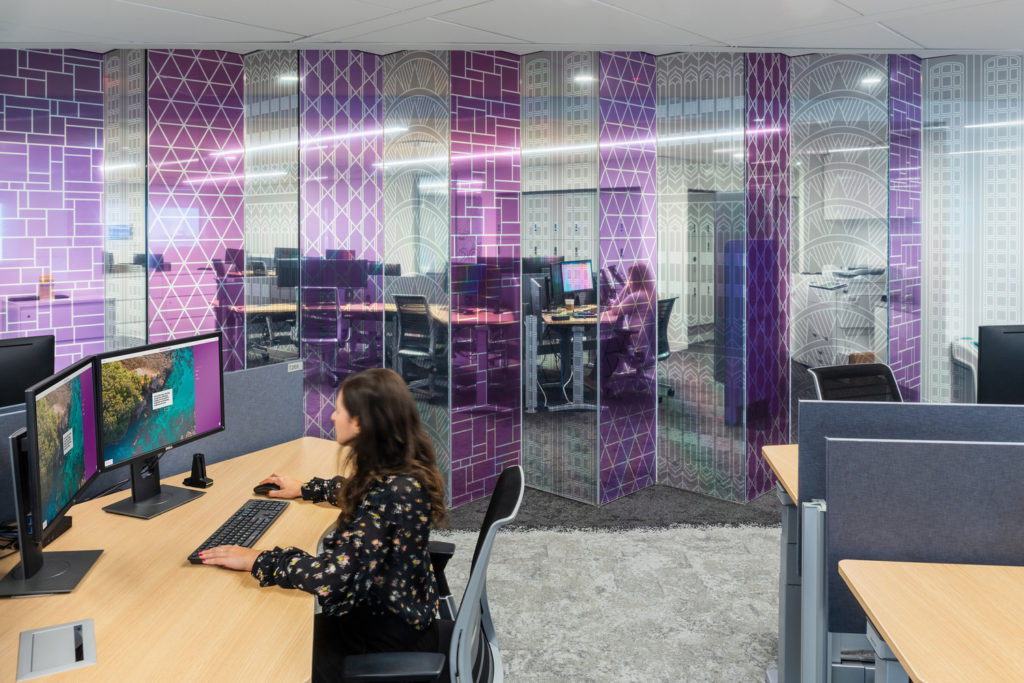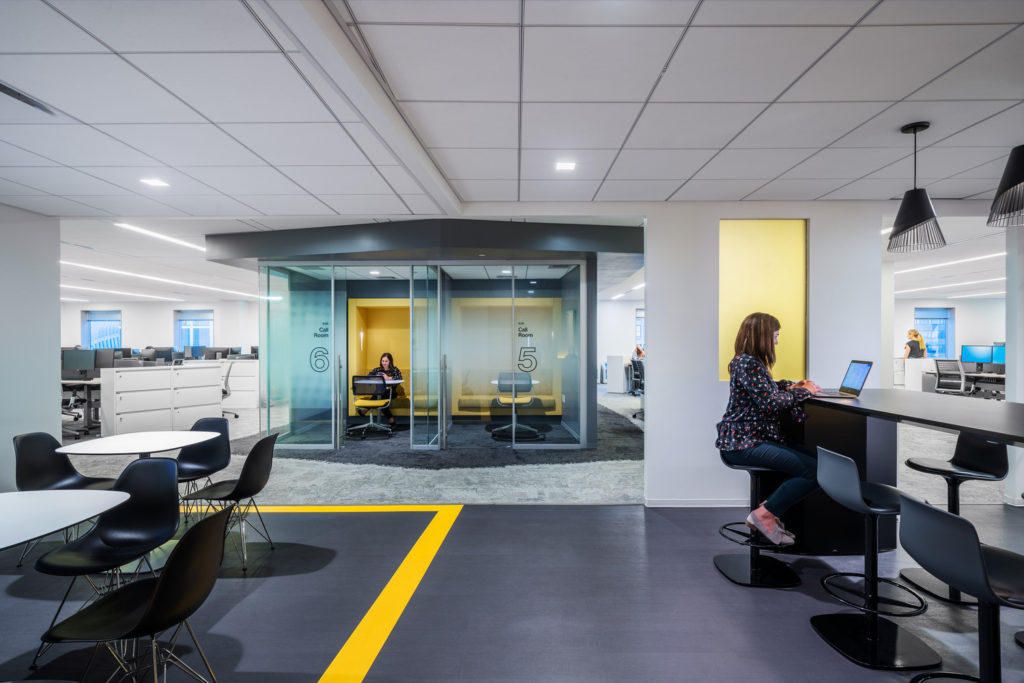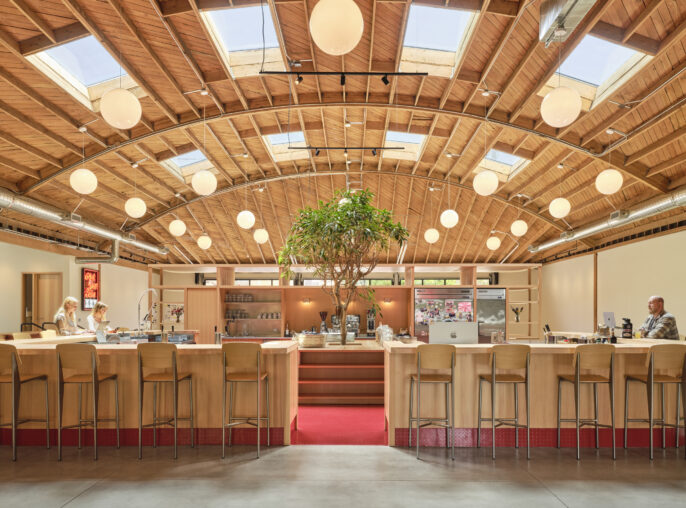Insight
Rethinking the Financial Workplace

With the escalation of the coronavirus pandemic, our world – and its built environments – shifted rapidly in ways beyond anything we could have anticipated or prepared for. The finance industry, like so many others, is establishing new protocols and strategies to safeguard healthy environments for everyone as the return to work comes onto our horizon. But over the last few months, the financial workforce itself has faced unique challenges and opportunities.
Pre-COVID discussions around remote work or location independence, which distributes the workforce among multiple locations rather than en masse in a centralized headquarters, for example, were already in the works for many firms, but indicated a policy shift that would require cultural buy-in and time to normalize. Inevitably, those discussions have escalated. Now that firms have experienced a successful, broad scale shift to remote, what will this mean for the financial sector in the long-term? And, what else can we re-imagine for the financial workplace while we’re at it?
Reconsidering What Normal Looks Like
 As with others, employees in the financial sector will return to a new normal as states and cities re-open. Right now, we’re working with clients to plan for the “interim” – the undetermined period of time between this summer and the wide distribution of a vaccine. Unfortunately, we won’t be able to flip a switch when this happens. Instead, employers are phasing their re-opening and considering the return across scales – from that of landlords to tenants to individual employees.
As with others, employees in the financial sector will return to a new normal as states and cities re-open. Right now, we’re working with clients to plan for the “interim” – the undetermined period of time between this summer and the wide distribution of a vaccine. Unfortunately, we won’t be able to flip a switch when this happens. Instead, employers are phasing their re-opening and considering the return across scales – from that of landlords to tenants to individual employees.
To give an idea of anticipated shifts in behavior that financial clients can anticipate, here’s a list of some common onsite policies that we’re seeing developed:
- Creating employee start times in shifts
- Phasing re-occupancy
- Unrolling new behavioral policies around how employees may use different work environments (i.e. capped meeting sizes, closed pantries, etc.)
- Staying home if feeling unwell – a cultural shift that asks that you don’t “fight your way through it”
- Respecting individual’s needs to continue remote working
These changes in protocol offer a chance to develop new habits and practices for all. This newfound open mindedness allows us to question the norm and imagine how to improve upon it.
Returning to the Workplace

While looking outside of the status quo is important, it is equally necessary to design for real conditions. Financial companies face unique challenges when considering the return to work. They have large, dense spaces such as trading floors that are fundamental to business operations. For many, the trading floor is of particular concern. Transitioning the trading desk to a remote set up – often referred to as a Rona-rig – was the first challenge. Although, they are considered successful short-term solutions, Rona-rigs are nowhere near as comprehensive as in-office trading floor desks, which often include 6 monitors, not to mention the benefits of in-person adjacencies and guaranteed high speed internet. Employers are now tasked with bringing traders back into the office in a way that is safe and productive. Some of our clients have decided as they have already transitioned to remote work that they would rather wait out the storm and remain remote for the rest of this calendar year at least. Others are uprooting their trading floors to locations outside of NYC. The key issue that firms are considering in this moment is, if you’re working remote or considering a distributed model, how can you ensure proprietary information is secure while meeting regulatory requirements.
Real Estate and Operations teams, along with their design partners, have their work cut out for them. For firms that are returning to work, they need to develop solutions that balance enabling the financial workforce to be productive in-person, while reassuring employees that their workplace is safe. This, among other reasons, contributes to a sense of apprehension behind rushing back into the office as soon as possible.
Revisiting Existing Questions

Before this pandemic uprooted our daily lives, the financial industry was already changing. As with many industries, COVID is accelerating the sector’s response to these pre-existing trends. Among these, the issue of the client comes to mind. Considering how to adjust a client-facing industry when remaining distant is a safety requirement goes hand in hand with supporting clients that are logging online rather than walking to a local branch to discuss advice in-person.
Luckily for the financial sector, its leaders have spent the last decade, if not more, competing with (or, according to some, becoming) the tech sector. Its consumers are already largely comfortable with technology, whether that’s facilitating direct deposits or robo-advising.
We have all watched the industry rebuild since the financial crisis now over a decade ago. And while this bred a generation – if not two – known to have a skepticism towards traditional financial brands, it has led these same generations to be tech savvy and in favor of convenience. Perhaps as the financial industry rebuilds this time, there are new opportunities to meet clients where they’re at – which is to say: virtually.
Resiliency of New York City

There was already indication that Wall Street was on the move whether to Hudson Yards or out of NYC altogether. Reactions to COVID may initially accelerate this exodus out of NYC as firms evaluate their real estate portfolios and space needs with new priorities. This may well lead to a decline in large, long term commercial real estate leases as employers look to reduce footprints to accommodate remote work and distributed workforces. Some say that this was inevitable regardless of COVID.
That said, this pandemic has not obliviated the value of New York City to the financial industry. From talent acquisition to international proximity, markets will return to normal, and NYC will thrive as the capital of the financial industry once more. What we’re wondering at HLW, though, is what that capital will look like. Will it be a sea of workstations? A wall of enclosed offices? Will it require all employees to be in the workplace every day? We predict, as is often the case, a happy medium. The current challenge is how to design for a future with conditions that are still unfolding.
In this way, the crisis is keeping us on our toes. Each day presents the opportunity to adjust how we work and to imagine a future of the workplace that was already on the horizon. When offices re-open, they’re not just restarting, they’re starting anew.


